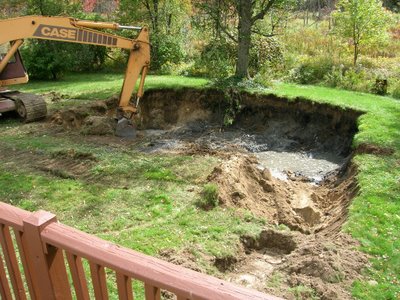It's hard for me to believe the debate over drilling in the Arctic National Wildlife Refuge is still going on. I suppose some people would say it'll continue until they finally decide to drill it. But anyway, it has been going on for years. My wife wrote a thesis on the rhetoric of the photography used during the debate, basically how pictures are used to convey different meanings and feelings. And just like pictures, the facts are construed to convey different meanings. At the heart of the debate is the amount of oil in the wildlife refuge and whether it is worth drilling.
According to the Dept. of Interior, there are 10.4 billion barrels of technically recoverable oil in the ANWR [1]. According to the Dept. of Energy, there is a 95% likelihood of there being 5.7 billion barrels, a 5% likelihood of there being 16 billion barrels, with an average estimate of 10.3 billion barrels [2].
Now, ten billion barrels of oil sound like a heck of a lot, huh? Well, the US consumed 20.7 million barrels a day in 2004 [3]. So doing the math, the ANWR only has enough oil for 502 days or 16.5 months. That's not much.
10.4 billion barrels / 20.7 million barrels per day = 502 days
I personally don't think it's worthwhile to disturb the ANWR for a little more than a years worth of oil. The oil is located in vital Caribou habitat [4]. But before we make any hasty judgments, lets look at what the proponents of oil exploration say. According to anwr.org, "ANWR oil could provide an additional 30 to 50 years of reliable supply" [5]. Now somebody has to be lying. We just showed it won't even last 2 years. Well, not exactly. We aren't going to pull 10 billion barrels of oil out of the ANWR all at once, so there probably will be 30 to 50 years of production, which could also be seen as 30 to 50 years of direct environmental impact. But let's assume that we do drill in the ANWR and take oil for 30 years, how much is that a day?
10.4 billion barrels / (30 yrs * 365.25 days per year) = 0.95 million barrels per day
The daily production from the ANWR would be less than 5% (0.95/20.7) of 2004 US oil consumption. Assuming oil consumption grows in the future, the ANWR oil would be an even more insignificant portion of the total oil. But we need oil and every little bit helps, right? Well, how about we reduce consumption instead. We could put 5% more ethanol in our gasoline, we could drive 5% less, or we could have more efficient vehicles. For example, the average passenger car gets 27.5 mpg [6]. If that average was increased to 29 mpg, passenger cars would consume 5.5% less gasoline - BAM no need for ANWR oil.
So, bottom line, there isn't much oil in the ANWR, so we might as well leave it there and start putting our resources to reducing oil consumption.
[1] US Department of Interior: http://www.doi.gov/news/030312.htm
[2] US Department of Energy: http://www.eia.doe.gov/pub/oil_gas/petroleum/analysis_publications/
arctic_national_wildlife_refuge/html/anwr101.html
[3] US Department of Energy: http://www.eia.doe.gov/emeu/cabs/topworldtables3_4.html
[4] US Fish and Wildlife Service: http://arctic.fws.gov/carcon.htm
[5] http://www.anwr.org/case.htm
[6] National Highway Traffic Safety Administration: http://www.nhtsa.dot.gov/cars/rules/cafe/overview.htm
Thursday, October 05, 2006
Sunday, October 01, 2006
Septic Work
We had our septic system replaced this past week. We had the money in escrow from when we bought the house, so it didn't really cost us anything. We had a guy up the street do the work. I was surprised how big and deep of a hole he dug. I knew the leach field was pretty good size, but I guess I didn't think that he would dig so deep to put sand below the crushed stone. Anyway, he did a really nice job cleaning up afterwards, so the yard still looks nice. That's one less thing to worry about.


Subscribe to:
Comments (Atom)